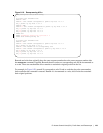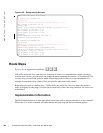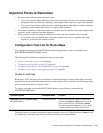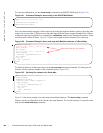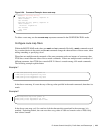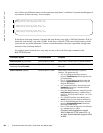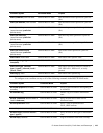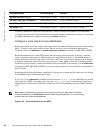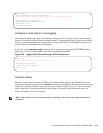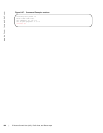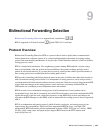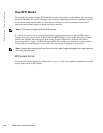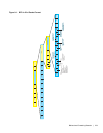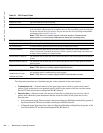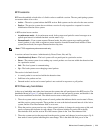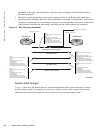
IP Access Control Lists (ACL), Prefix Lists, and Route-maps | 167
Configure a route map for route tagging
One method for identifying routes from different routing protocols is to assign a tag to routes from that
protocol. As the route enters a different routing domain, it is tagged and that tag is passed along with the
route as it passes through different routing protocols. This tag can then be used when the route leaves a
routing domain to redistribute those routes again.
In Figure 8-26, the
redistribute ospf command with a route map is used in the ROUTER RIP mode to
apply a tag of 34 to all internal OSPF routes that are redistributed into RIP.
Figure 8-26. Tagging OSPF Routes Entering a RIP Routing Domain
Continue clause
Normally, when a match is found, set clauses are executed, and the packet is then forwarded; no more
route-map modules are processed. If the
continue command is configured at the end of a module, the next
module (or a specified module) is processed even after a match is found. Figure 8-27 shows a continue
clause at the end of a route-map module. In this example, if a match is found in the route-map “test”
module 10, module 30 will be processed.
Note: If the continue clause is configured without specifying a module, the next sequential module is
processed.
router ospf 34
default-information originate metric-type 1
redistribute static metric 20 metric-type 2 tag 0 route-map staticospf
!
route-map staticospf permit 10
match interface GigabitEthernet 0/0
match metric 255
set level backbone
!
router rip
redistribute ospf 34 metric 1 route-map torip
!
route-map torip permit 10
match route-type internal
set tag 34
!



